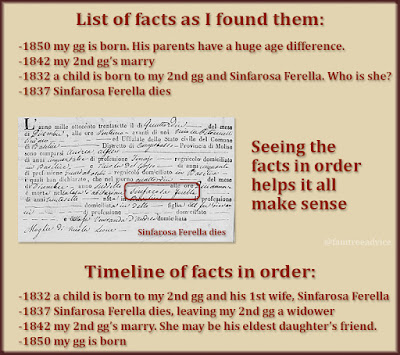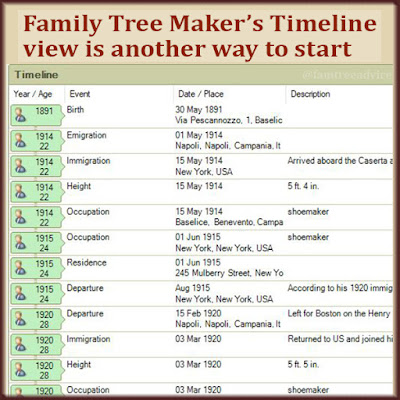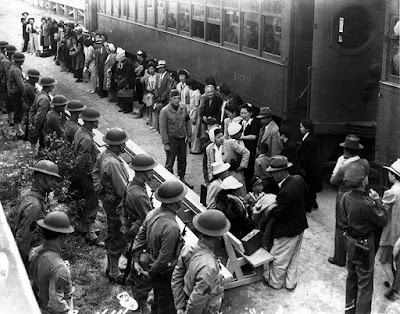Got some free-time for the holidays? Try these popular genealogy projects.
I hope you're lucky enough to have some extra days off from work or school coming up. I don't, but I know what I'd do with them. Genealogy!!
Here are 6 of the most popular genealogy projects I've presented in this blog. Take a look at them and see which appeals to you the most. Choose your favorite project now and put aside some time for yourself…and your genealogy research.
How to Create a 'Book of Life' for Your Relatives
Inspired by Henry Louis Gates, Jr.'s TV show, "Finding Your Roots," this article explains step-by-step how you can create a Book of Life for someone special.
I made one for a genealogy enthusiast in my family on her milestone birthday. But we should all make one for ourselves. Please consider gifting a Book of Life to yourself first. Then decide who else would love to have their own.
 |
| Create your own book of life. Then move on to your relatives. |
3 Things to Do with Ahnentafel Numbers
This is my most-read article by Pinterest users. It makes me so happy to see all those visitors because this project means a lot to me.
I consult my "grandparent chart" (actually a spreadsheet) all the time. It shows me at a glance whose names I've discovered and which of my 4 grandparents descends from them.
I've had my grandparent chart for quite some time. Adding each ancestor's Ahnentafel number—even as a placeholder for a missing name—made the chart more useful.
I created a custom field in my Family Tree Maker software to hold an Ahnentafel number. Whenever I'm viewing a direct ancestor, I open the chart, see their Ahnentafel number, and add it to my family tree.
What I love about using the numbers is how it lets you see your progress, as well as who you need to find.
 |
| Go to the article to download your free Ahnentafel spreadsheet. |
A Roadmap for Your Genealogy Research
If you're interested in the Ahnentafel numbers, you've got to read this article that takes it up a notch. It explains how to turn the chart and those numbers into a roadmap.
Create and follow your personal family tree research roadmap and stay on course.
3 Ways to Find Double Ancestors in Your Family Tree
Are any of your direct ancestors related to you in two ways?
When I learned my father's parents were 3rd cousins, I realized they had shared ancestors. So some of my multi-great grandparents belong to both Grandpa and Grandma.
Here are 3 different ways to identify those double ancestors and make them stand out. I use all 3.
How a Research Timeline Helps You Spot Gaps and Problems
This idea struck me as being so simple it might not be worth talking about. But the article has been very popular. I think the logic of it made an impression on my readers.
A timeline of facts helps spot errors. It shows where you need more research. It helps you draw conclusions about a family or individual. How else will you use a timeline?
 |
| A timeline of facts can help make sense of a family tree mystery and guide your research. |
7 Genealogy Projects We All Need to Do
If you prefer one-stop shopping, here's a deal for you. This article highlights 7 different genealogy projects.
Once again, pick your favorite and get busy.
These should be more than enough to keep you busy on your days off. In fact, I hope you'll decide to add a few of these projects to your 2020 Genealogy Goals list.
More about goals coming soon. Happy holidays!



















